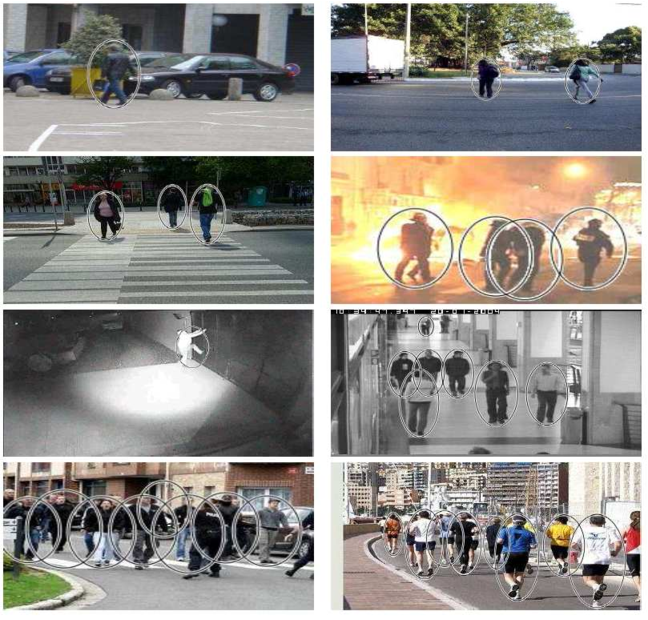Section: New Results
People Detection for Crowded Scenes
Participants : Malik Souded, François Brémond.
keywords: people detection, crowded scenes, features, boosting.
This works aims at proposing an efficient people detection algorithm which can deal with crowded scenes.
Early Work
We have previously proposed an approach which optimizes state-of-the-art methods [Tuzel 2007, Yao 2008], based on training cascade of classifiers using LogitBoost algorithm on region covariance descriptors. This approach performs in real time and provides good detection performances in low to medium density scenes (see some examples in figure 10 ). However, this approach shows its limits on crowded scenes. Both detection accuracy and detection time are highly impacted in this case. The detection time increases dramatically due to the number of people in images, which forces the evaluation of many cascade levels, while the numerous partial occlusions highly decrease the detection rate (the considered detector is a full-body detector). To deal with these issues, we are working on a new approach.
Current Work
Our approach is based on training a cascade of classifiers using Boosting algorithms too, but on large sets of various features with several parameters for each of them (LBP, Haar-Like, HOG, Region Covariance Descriptor, etc.). The variety of features is motivated by three main reasons:
-
Using fast features like LBP and Haar-like in the first levels of the cascade allows a fast rejection of a high part of negatives. The remaining ones will be rejected by a more sophisticated feature like Covariance Descriptor. This will highly decrease the detection time.
-
Covariance Descriptor are not discriminative enough for very small regions. Our aim is to train the new detector on specific body parts, especially the upper one (shoulders and heads) to increase detection rate in highly crowded scenes (with a high rate of partial occlusions). Using a large set of various features allows the training system to select the ones which provide the best discriminative power for these regions.
-
The possibility to combine several features to describe the same region, even by a simple concatenation, providing more discriminative power than using single features.
Another part of this approach consists in the optimization of the detector at two levels:
-
Optimizing the training process by first clustering both positive and negative training samples. This clustering allows to focus on the hard samples which are too close to the other class from a classification point of view, providing more accurate detectors.
-
Iterative training of several detectors on randomly selected samples, and weighting of the training samples according to their classification confidence, which allows to improve the clustering process.
The evaluation of this approach is still in progress.



